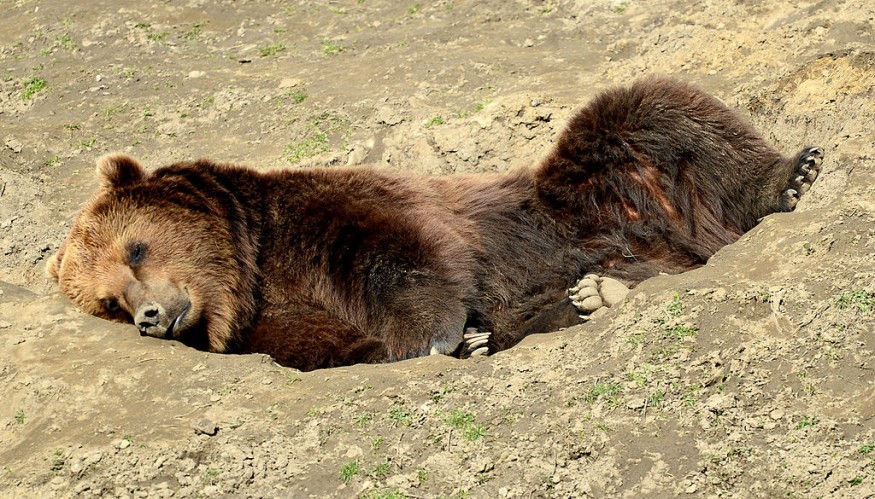Researchers had identified an active hunting strategy used by brown bears to replenish after a six-month hibernation. The starving predator switches its habitat to hunt reindeer and moose calves on their calving period.
Researchers from Nottingham Trent University, the University of León in Spain, as well as Norwegian and Swedish experts studied fifteen bears fitted with GPS collars, monitored for two years to track their habitat selection of vulnerable preys.
In addition, more than 2,500 adult female reindeer were also tracked to alert researchers in cases of close encounters. One of the bears killed 38 newborn reindeer in one month and 18 young moose the next.
Habitat switch improves the bear's active hunting period

In the study published in the journal Diversity, the team found that bears which resurfaced from six-month hibernation started hunting reindeers in the spring - their calving period.
Naturally, they move to habitats close from wetlands and evergreen forests to more rugged terrain and higher elevations favorable to reindeers with their young.
As the reindeer calving period ended, the predators started to move to areas preferred by moose, which also subsequently started their calving period.
Once calving season ended and summer begins, bears switch to a diet of berries and moved well away from gravel roads near to humans until it was time to hibernate again.
Dr. Antonio Uzal Fernandez, an expert in wildlife conservation in Nottingham Trent University's School of Animal, Rural and Environmental Sciences, said: "It is clear that highly predatory bears were mirroring the land cover types of reindeer and moose to overlap with seasonally available and vulnerable prey."
Moreover, he added that across multiple continents, massive carnivores are already partially recovering their ranges. But while this can be beneficial to many ecosystems, it can also pose implications on the depredation of livestock.
Establishing preventive actions
The findings of the study could help develop forecasts of potential hotspots to regulate conflict of human-wildlife coexistence.
"Our work could help to inform managers and livestock owners how to reduce this conflict and promote long-term conservation and human-wildlife coexistence. Interestingly, high and low predatory bears selected habitats differently in all study periods, with few habitats selected or avoided by both groups," Dr Fernandez added.
According to The Guardian, reindeer killings peaked during their calving periods in May, where eight of the 15 bears were classed as highly predatory and averaged about half a kill a day during the reindeer and moose-calving periods.
Moreover, the predators killed more than 20 newborn reindeer and five newborn moose in a calving period, with one bear averaging about three kills every two days.
According to BBC, one of the bears studied killed 38 newborn reindeer in one month and 18 young moose the next.
The study suggests that "predatory behaviors are reflected in the selection of habitat types." They further evidenced that different levels of specialization in foraging behavior helps to explain individual variation in bear habitat selection.
© 2025 NatureWorldNews.com All rights reserved. Do not reproduce without permission.





